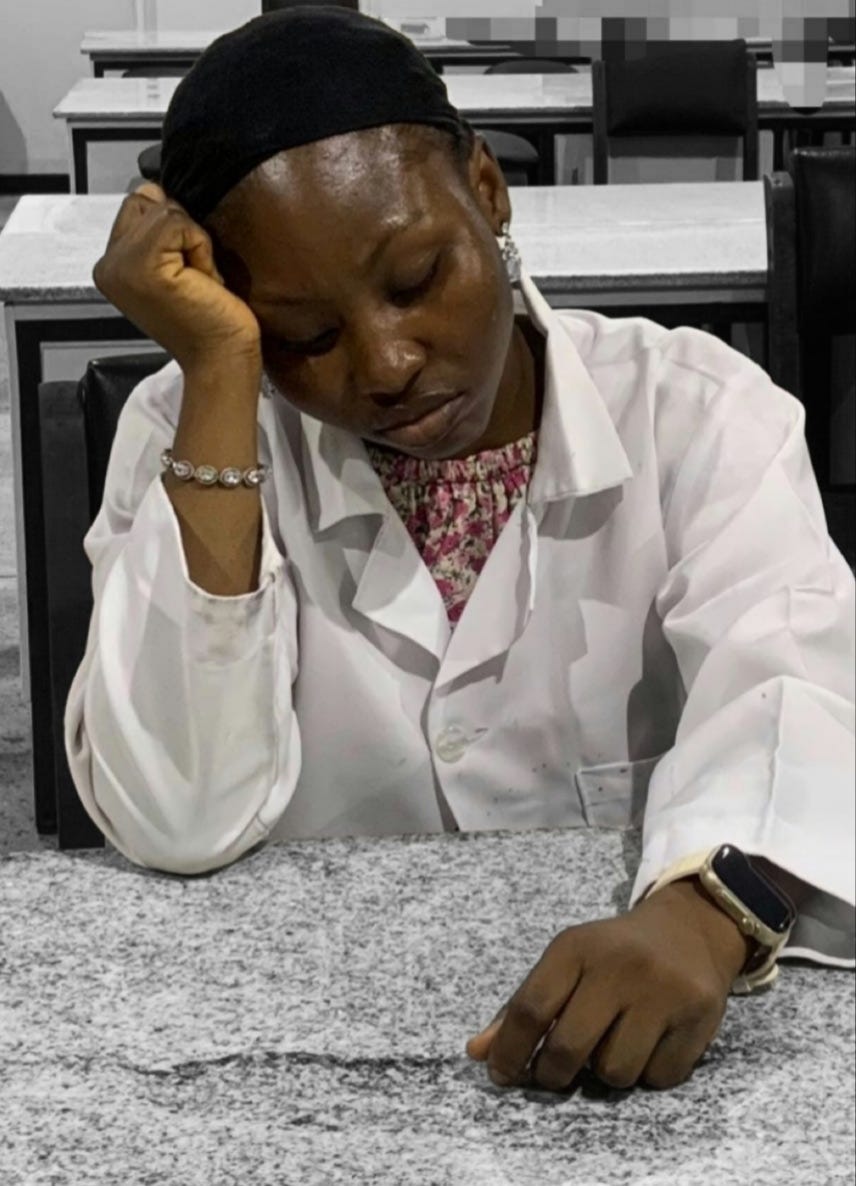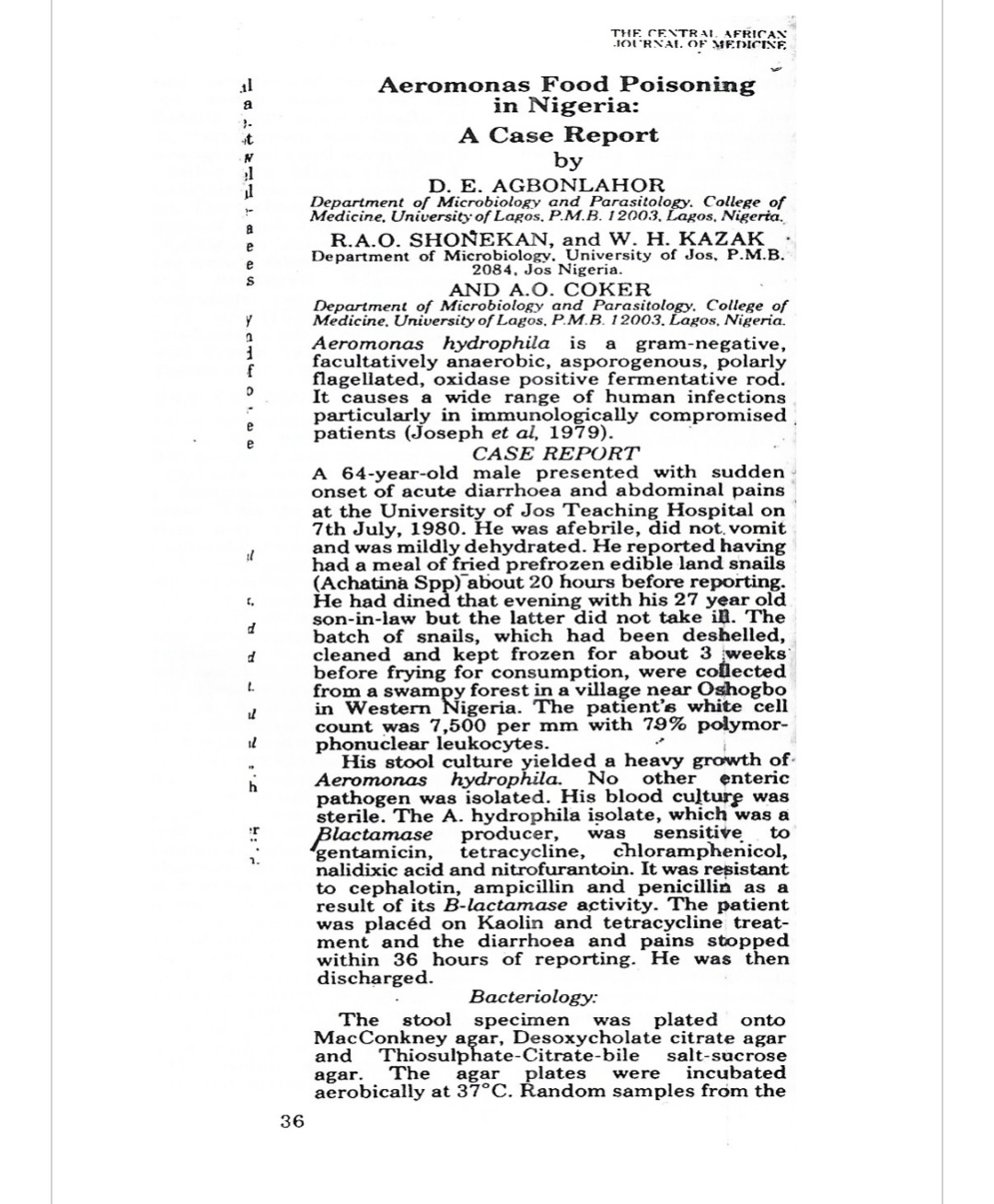FROM JOURNALS TO DUST
Why MLS Research Barely Has An Impact On Real Practice of MLS and Education of MLS Students
AIM:
To explore the reasons for the limited application of research findings in the real-life practice of medical laboratory science
GIVEN:
Medical laboratory science, research, automation, journal, laboratory.
METHOD:
Exploratory/ Expository
PRINCIPLE:
“Last days at the University of Nigeria! Let the countdown begin!” shouted the final year students of the Medical Laboratory Science department as they converged for their first class of the session, ready to take on every task and challenge ahead. Their sky that has been gloomy is about to be laced with silver linings of success.
Adaeze was more excited about the research methodology and statistics classes because she prided herself on being a revolutionary young MLS, about to change the narrative and trajectory of bench practice and laboratory medicine in Nigeria, one publication at a time. Attending classes meant she got to understand the basics of being a researcher. How quaint!
The session started for the to-be scientist the Tinubu way – hitting the ground running – as the class was divided into 10 groups, each group to a lecturer for their seminar and project work. Dr. Okafor’s lessons on research surpassed her dreams so much so that learning referencing, citations, and reading through journals soon became her haven. Her commitment to learning earned her a spot in Dr. Okafor’s research team, where she became a published undergraduate before getting inducted into the medical laboratory profession.
Months later, induction bells rang with felicitations for Ada everywhere she stepped foot in after bagging the award for the best research project of her class and a recognition from the Medical Laboratory Science Council of Nigeria as the most promising researcher of the year. Everyone anticipated the groundbreaking success she would achieve in laboratory practice, including herself. She had a dream that night where she saw herself controlling robots to analyse samples.
This dream was cut short when she woke up to the reality of securing a spot for internship placement. After months of relentless searching, she finally secured a position at one of Federal Medical Centres (FMCs) in Nigeria. She resumed with sky-high excitement, only to be thrown off balance when she was handed a tally counter and instructed to urgently full blood count and differentials with a tally counter on nearly 200 samples.
She thought about the publications she featured with Dr. Okafor, where they highlighted turnaround time and how the Sysmex machine has helped to improve that. She couldn't believe she had become that medical laboratory scientist with a redacting bench practice who was living the researcher lifestyle, multiple publications (in works), but zero application in real life.
This is the reality of many young scientists just transitioning into the profession, and even experienced scientists.
How much time is left for a Director of Medical Laboratory Services to get hands-on practice of Sysmex XN-9100 haematology analyser and an intern chooses another path in life or follows the JAPA train before laboratory practices reach the highest degree?
Biomedical science has been proven from time immemorial to be the future of healthcare because what is diagnosis without analysis of blood samples and body fluids, processing and examination of tissue samples, identification of microorganisms, and antibiotics susceptibility testing? These start with the techniques employed from sample collection to sending test results. However, how effective and relevant are these techniques? How far has research been explored to improve the practice of medical laboratory science? Do these research findings have an impact on diagnostic healthcare? Has research been translational in academia and continuing professional development, and unity?
PROCEDURE:
This article aims to demystify and explore the intricate web of questions that are strung together by poor implementation of research practices.
MEDICAL LABORATORY SCIENCE AND RESEARCH
Research is a studious enquiry. An investigation or experimentation aimed at the discovery and interpretation of facts, according to the Merriam-Webster dictionary.
Biomedical research is a branch of science that entails the investigation of biological processes and causes of diseases to close the knowledge gap, create interventions, and develop technologies useful in healthcare and public health. It integrates various disciplines such as molecular biology, biochemistry, genetics, microbiology, immunology, pharmacology, bioinformatics, biotechnology, and, in recent times, artificial intelligence to study how cells, organs, and systems function and respond to diseases.
Research practice among Medical Laboratory Scientists in Nigeria started to grow significantly after the formal establishment of a structured training system in the late 1960s. This enabled medical laboratory scientists to secure their place in diagnosis and public health.
Professor Dennis Agbonlahor and Dr. R.A.O. Shonekan were among the earliest Medical Laboratory Scientists who had publications in local and international journals as far back as 1959. As trained parasitologists, they have contributed immensely to combating and eliminating parasites, including malaria in West Africa.
A picture of a research publication by Pa Shonekan and Professor Dennis in 1982
Ever since then, the landscape of research in medical laboratory science has evolved beyond what is conventionally known to be explored. Many young scientists, as well as peer-reviewed medical laboratory journals, have emerged. This has led to proper documentation and open access to research findings that have been carried out in recent times compared to the earliest years. More interesting topics like phytomedicine, artificial intelligence, blood transfusion science, bioinformatics, histopathology and molecular biology have been researched by some of the brightest young medical laboratory researchers of this century— Kingsley Obeta, Precious Sylvanus, Olaniyi Abideen, and Akinpelu Moronkeji
Also, new laboratory science-specific journals have been created by innovative minds within the profession like the Journal of Medical Laboratory Science by the Association of Medical Laboratory Science of Nigeria (AMLSCN), Sokoto Journal of Medical Laboratory Science, Bayero Journal of Medical Laboratory Science, and Nexus of Medicine and Laboratory Science Journal.
In 2020, Obeta et al wrote a review article in the International Journal of Haematology about the recent trends of blood transfusion. They stated ways to improve and hasten blood transfusion and delivery, highlighting electronic cross-matching, delivery of blood products using drones, and apheresis of specific blood components. However, the epileptic power supply that has plagued Nigeria continues to hinder its application to bench practice. This is one of the many examples of poor research implementation in Nigeria.
THE DISCONNECT BETWEEN RESEARCH AND MEDICAL LABORATORY SCIENCE PRACTICE IN NIGERIA
Different researchers have fed into their curiosity to find answers and offer solutions to mind-boggling questions about how certain analyses are being done in everyday practice. In the course of their research, many have found solutions, and some have been able to bring the problem into the spotlight for more research to be carried out. However, to what extent has the solution proffered been acted upon?
Here are some of the research findings and the impeding problems delaying proper implementation in the last few years;
Electronic documentation
In many laboratories in Nigeria, the use of pen and paper to document the details of every activity that goes on in the laboratory is in vogue. Laboratory professionals have to deal with different fonts of handwriting when there is a need to check records of the previous day's activity. There is also a slow response to the needs of patients. For example, if a patient needs to know the date of their donation or how many pints of blood have been donated, it could take minutes before the lab scientist skims through the blood donation register to provide these answers, further agitating an already frustrated patient.
In addition, these registers are not well archived, such that if a medicolegal issue were to ensue, the medical laboratory scientist may be indicted because of missing pages of laboratory registers.
New innovations through research have provided significant alternatives beyond black and white, such as the use of software applications like openLIMS, Electronic Medical Records, and SchuyLab to maintain data integrity, legibility, identification, and real-time recording. However, most hospitals do not have this facility due to their inability to prioritise digitisation and, consequently, they lack a standard ICT department. On the other hand, hospitals that manage to send results via EMR, the poor network system in the country continues to fail them.
Due to these reasons, a lot of documentation errors and challenges persist in reality. This has a spiral effect as it impacts the quarterly health reports that are reviewed, which can affect how certain health concerns are addressed as a result of insufficient and unreliable records. It also breeds a group of professionals who are less conversant with the legalities of their profession.
Quality Management System
Research has proven that the introduction of a quality management system to standardise the practice of medical laboratories has promoted the interdependency of results from different laboratories. This measure helps patients trust test results from different laboratories and gives lab professionals confidence in their practice. Unfortunately, not all laboratories comply with the International Standard Organisation 15189.
The patient-focused standard is not upheld because several laboratories cannot afford the required machines to analyse certain test samples, while the ones that can afford it are not properly trained on how to use them. In many cases, these laboratories do not have a maintenance routine, are short of reagents or out of stock of essential components to keep them running. For example, cuvettes in a coagulometer.
This and many more contribute to errors in test results, delayed turnaround time, and non-compliance with prioritising patients as required.
Transfusion-Transmissible Infections Testing Accuracy
One of the best practices of blood transfusion is screening potential donors for transfusion-transmissible infections like hepatitis B, hepatitis C, HIV, and syphilis to prevent transfusion reactions while trying to save the life of a dying patient.
Rapid test kits were introduced by the World Health Organization in the 2010s to grant testing access to remote areas, increase turnaround time, and reduce cost. In recent times, even though they are known for their specificity, they have been proven to produce false positives and vice versa. This led to the introduction of Enzyme-Linked Immunosorbent Assay (ELISA), as shown by research to be more sensitive, accurate, confirmatory, and diagnostic.
However, not many labs have access to the ELISA kits and machines due to a lack of funds and skilled professionals, hindering the progress of blood transfusion science and posing a risk of transfusing ELISA-unscreened blood to patients.
CONSEQUENCES OF THE POOR RESEARCH PRACTICE LINK
The result of outdated practice has created a frustrating system for patients, laboratory professionals and students in many ways.
Crippled diagnostic system: The quality of care rendered to patients keeps declining as research findings are not being implemented. This leaves the diagnostic healthcare system crippled. There are increased cases of delayed diagnosis or misdiagnosis— in the case of false-positive and false-negative results. It has created a loop of misdiagnosis that leads to wrong treatment plans, further damaging the health of the patient.
Poor professional reputation: the ratings of a laboratory scientist will likely decline among other medical professionals when talks of improving diagnosis are had, and the MLS can't contribute much to the conversation because of a lack of exposure to recent developments. This might discourage the scientist and reduce the quality of analysis being done within the scope of what they can work with. There might also be a decline in knowledge. With no data protection in place, it will be difficult for the hospital to control disease outbreaks or make appropriate health policies as a result of inadequate data to reach reasonable conclusions.
Use of outdated curriculum: Students are taught outdated practices and are not well informed about advances in their profession. They may struggle to get international opportunities and practice in a fully functional automated laboratory. Also, potential young researchers may become unmotivated, impeding the growth of the profession and diagnostic health in general.
RECOMMENDATION:
To bridge the gap between research and its application in bench practice, the following must be done;
Proper funding for Laboratories: Laboratories must be well-funded. This should start with a review of the yearly health budget. Also, the Medical Laboratory Science Council of Nigeria should follow up with hospitals to ensure that state-of-the-art laboratories that follow the current ISO standard are built. When there is enough funding, equipment will be bought and well-maintained, and scientists will be eager to practice the latest advancements to improve patient care and diagnosis.
Continuing professional development:
Frequent training programmes must be designed for every laboratorian within the scope of their field in tandem with recent research findings. These trainings must have a well-detailed framework with certificates conferred to prove their qualification. Also, researchers must collaborate with on-bench scientists on how best to translate their research into daily practice. There should be a level playing ground where researchers can express what their aim was, the challenges they faced during the research process, and the impact they hope to make. This eradicates the bad blood that has been created between them and on-bench scientists due to the notion that research laboratory scientists, are superior. It will create a teamwork avenue for the growth of the profession and patient care.
Development of new policies: certain policies must be made and implemented in the interest of the patients, especially to put an end to outdated and risky practices. For example, in 2024, the National Blood Service Commission, in conjunction with the Medical Laboratory Science Council of Nigeria, put a restriction on laboratories that still depend on rapid test kits to screen for transmissible transfusion infections in a signed memorandum.
Interdisciplinary teamwork: The one health approach should be taken. It is common knowledge that the hospital has different specialized units working tirelessly to keep it running at an optimal level. While the laboratory is at the heart of it, it is important that round table discussions are held on some of these innovations, and how they will influence changes, especially for diagnosis. This will help other professionals, especially doctors to build more trust in the services rendered by the lab and foster unity among hospital professionals.
COMMENTS
With recent developments in global health policies following the influence of the new administration in the United States, there are increasing uncertainties regarding interventions rendered to developing countries like Nigeria. Therefore, it has become urgent for medical laboratory scientists in leadership to work with the Chief Medical Directors (CMDs) of their respective hospitals in conjunction with the Nigerian government to ensure that research publications don't just become housed on the library shelves or become library arts that students/MLS marvel at without experiencing their translation into practice or mining their value to improve laboratory practices and diagnostic health. Failure to turn research evidence into action risks having medical laboratory scientists who are less interested in the profession and patients whose recovery become elongated due to ineffective laboratory practices. It is time to take action!









How unfortunate that quality research from seasoned researchers has yet to be implemented.
The statement that outdated techniques are being taught to young MLS students is frightening, because this might be passed on to the next generation of MLS
A sigh of relief, though, as these powerful recommendations, if implemented, would do the hack. Let's hope it gets to the right authority.